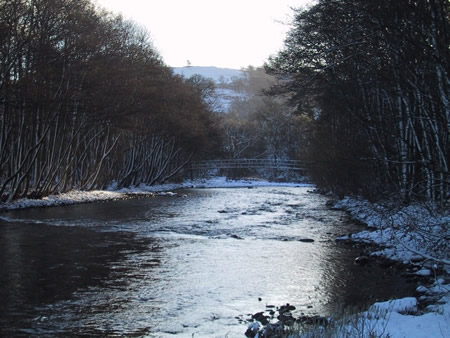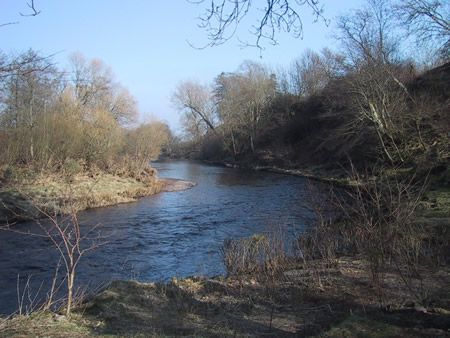These bulletin blogs represent news about Finavon and the South Esk, and my views as a riparian owner. They are not the views of any other organisation, nor are they designed to promote the interests of any individual or organisation other than Finavon Castle Water and factors affecting the fishery. Tony Andrews
It is unfortunate that some people, whose words are currently in the public domain, describe the work being done to track the riparian destination of the South Esk’s early running salmon as a “waste of time”. I hope that my readers will ignore those statements because, in my view, they are based on ignorance and a lack of understanding of the role of scientific data in providing fishery managers with the information they need to make relevant and timely decisions to conserve, and ultimately enhance, the river’s stocks of wild salmon and sea trout.
In addition to their lack of understanding of the role of science, these critics of the Marine Scotland S Esk stock assessment project are I imagine frustrated by the time it takes to obtain meaningful data. Perhaps they may one day accept the principle that knowledge (ie scientific data) is a better basis for taking action than unfounded guesswork!
The 2012 Spring Run. While it is true that the South Esk’s 2012 run of spring fish have so far been disappointing, I note that small numbers of fish have entered the river, some of which have moved up above Brechin and some caught and returned alive. Inshewan reported an 8lbs fish this week, and a fresh fish of 12 to 15lbs was hooked and lost in Melgund Pool (Indies Beat, FCW) earlier today (Friday) following a slight rise in the river level, largely as a result of snowmelt. It is also true that when rivers are very low salmon are often reluctant to enter them and to move on upstream. The 2012 spring has featured a period of very low water. It is therefore manifestly wrong to attribute the lack of fish caught by the very few rods that have ventured out this season to low pre-fishery abundance. As I have said before in these blogs; rod catches, in the absence of other data, can provide useful information about stock abundance, but we should not base our planning and management decisions on rod catches alone.
Onshore winds. With a strong East wind, and surf churning up gravel and sand in the estuary, and with cold water exiting the river, combined with low river levels, it is really not surprising that the bulk of the spring run has stayed at sea. Julian Maclean told me today that no fish have been caught in the nets during the last week, which I can imagine was no surprise to George Pullar, nor the MSS team because salmon generally keep away from the coast when the wind is in the East. To date no tagged fish have been recorded by receivers on Tay, Dee or North Esk, only on the South Esk.
It is worth noting that of the 47 fish so far radio tagged, 9 have been recorded going up the South Esk of which 3 have returned to Montrose Basin. In other words, these 3 fish were recorded as moving downstream of the lowest receiver at Bridge of Dun having previously been recorded at Kinnaird. If we get a good rise in water level, a change in wind direction and warmer temperatures, we should see more fish enter the river. Our three ‘Hamlet’ fish may even decide to return!
The Big Picture – the Ocean ecosystem. An ecologist at the Institute of Marine Research in Bergen, Norway, who was the coordinator of the multinational SALSEA project, last week answered a question for me about predicting salmon runs. I asked him about the 2012 run of salmon into our Scottish East coast rivers. His reply surprised me on two counts: first, he was prepared to make a prediction, which is quite unusual for a high level scientist. Second, he said that we should expect more multi sea winter salmon in good condition and that this trend – more bigger salmon – is likely to continue for the next few years. He was less sanguine about grilse returns and would not be drawn on the overall pre fishery abundance figures. I took that to mean that the cake is no bigger, but that marine survival of certain groups of fish may be improving. Interesting stuff, but maybe we shouldn’t get too excited!
If our media quoted luddites could find a way of acknowledging the significance of facts about the spring migration provided by recordings of South Esk spring salmon, and give their full support to the work of the Montrose team of scientists, we would all be in a better place. Ultimately, if that unlikely situation were to arise, the beneficiary would be the river and its stocks of migratory salmonids. Here’s hoping!
TA on 6 April 2012

